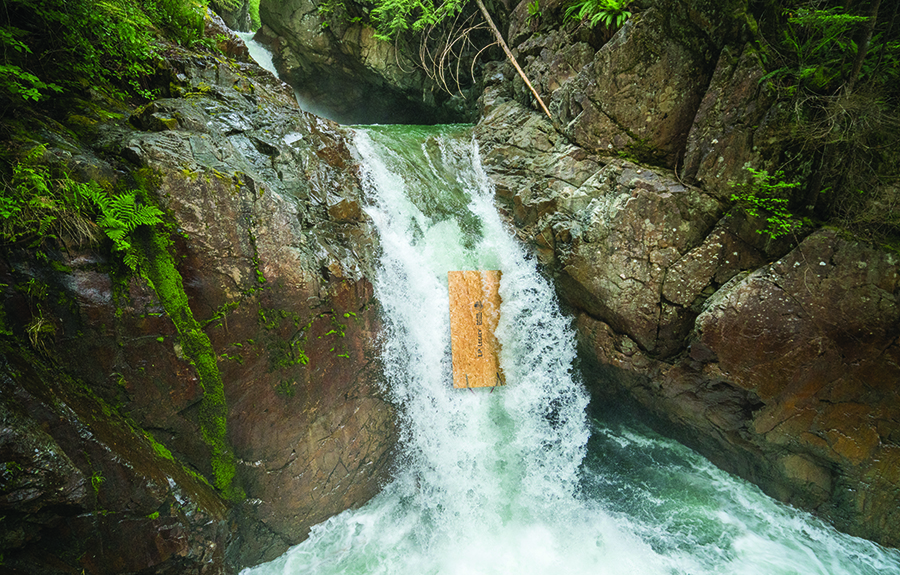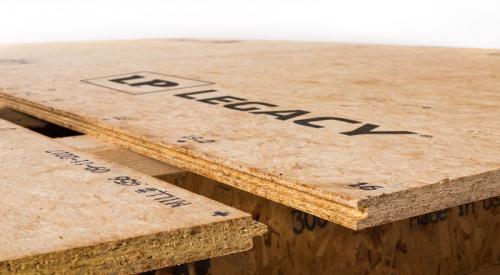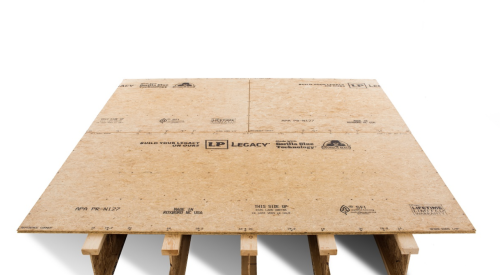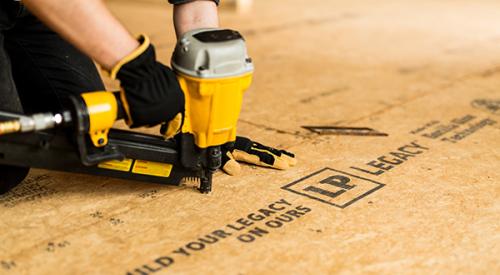OSB sub-flooring is one of the hardest-working products in a home. During construction, sub-floor is trampled in all weather conditions; once the house is complete, that same sub-floor provides a sturdy support for the life of the home. As such, sub-floor panels undergo a barrage of testing to certify and quantify their strength and capabilities.
LP Legacy® premium sub-flooring has undergone those tests and is APA-rated with the highest bending stiffness. It is one of the strongest sub-floor panels in the industry, also offering superior moisture resistance that prevents edge swell. But product developers wanted to go further than standard testing, pushing the panels to their limits and showing their performance in a completely different way. The panels were handed over to extreme athletes and tested in the rainforest under exceptionally harsh weather conditions.
The first Tested Extreme™ expedition saw the LP expedition team and two of the world’s leading kayakers in a remote forest north of Vancouver. Under the lens of adventure photographers and videographers, the team sent an LP Legacy sub-flooring panel over the edge of Britannia Falls, a series of waterfalls totaling a 70-feet drop and flowing at 625 cubic feet per second. The panel then remained in the falls’ swirling wake overnight.
Twenty-four hours later, when the team retrieved the board from the river, the panel showed some bumps and bruises but no signs of swelling.
“LP put the boards through a submersion test, but we thought this would be a much better test, with the force of the water on the board and it being submerged at the same time,” says Luke Partridge, who kayaked the waterfall and assisted with the testing.
“The power of any river, big or small, is relentless. It’s a constant force,” adds professional extreme kayaker Benny Marr, who was also on site.
In the second Tested Extreme expedition, pro mountain bikers Ollie Jones and Kevin Landry built ramps using LP Legacy panels, then showed no mercy as they rode, jumped, and pounded through a torrential storm, leaping from and landing on the panels more than 50 times. Despite the continual pounding and the rainy conditions, the panels did not split and showed no signs of swelling.

“LP asked us to treat the ramps as we would any course, to hold nothing back,” Jones said. “It was fun to see how well the panels held up under those conditions.”
What does going to extreme lengths mean to builders? It’s simple: If the panels can withstand these extremes, it’s easy to see how they’ll stand up to tough jobsite conditions.
“I think ultimately what builders want in a panel is to never have to deal with it after installation. It doesn’t give them any issues initially in the build, through the construction phase, and while the finished flooring is going down,” says Brian St. Germain, LP’s Director of Business Quality & Technology. “To withstand all the rigors of building and still end up where they don’t have to think about it after it’s installed, that requires a tough panel, and that’s what we designed.”

For videos of LP Legacy plummeting over Britannia Falls and withstanding a barrage of mountain bikes, as well as behind-the-scenes footage from both Tested Extreme expeditions, visit www.testedextreme.com.












